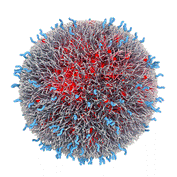Center, Biotechnology

Nebraska Center for Biotechnology: Faculty and Staff Publications
Document Type
Article
Date of this Version
8-7-2020
Citation
Plant Biotechnology Journal (2021) 19, pp. 351–364. doi: 10.1111/pbi.13469
Abstract
Alfalfa (Medicago sativa L.) is one of the most important forage crops throughout the world. Maximizing leaf retention during the haymaking process is critical for achieving superior hay quality and maintaining biomass yield. Leaf abscission process affects leaf retention. Previous studies have largely focused on the molecular mechanisms of floral organ, pedicel and seed abscission but scarcely touched on leaf and petiole abscission. This study focuses on leaf and petiole abscission in the model legume Medicago truncatula and its closely related commercial species alfalfa. By analysing the petiolule-like pulvinus (plp) mutant in M. truncatula at phenotypic level (breakstrength and shaking assays), microscopic level (scanning electron microscopy and cross-sectional analyses) and molecular level (expression level and expression pattern analyses), we discovered that the loss of function of PLP leads to an absence of abscission zone (AZ) formation and PLP plays an important role in leaflet and petiole AZ differentiation. Microarray analysis indicated that PLP affects abscission process through modulating genes involved in hormonal homeostasis, cell wall remodelling and degradation. Detailed analyses led us to propose a functional model of PLP in regulating leaflet and petiole abscission. Furthermore, we cloned the PLP gene (MsPLP) from alfalfa and produced RNAi transgenic alfalfa plants to down-regulate the endogenous MsPLP. Down-regulation of MsPLP results in altered pulvinus structure with increased leaflet breakstrength, thus offering a new approach to decrease leaf loss during alfalfa haymaking process.


Comments
ª 2020 The Authors. Plant Biotechnology Journal published by Society for Experimental Biology and The Association of Applied Biologists and John Wiley & Sons Ltd, 19, 351–364